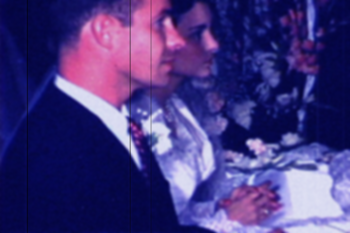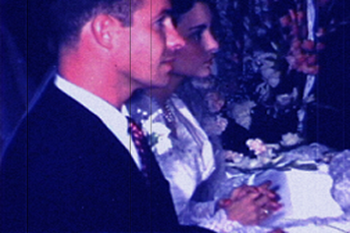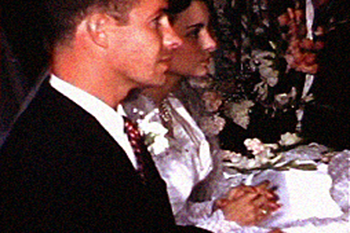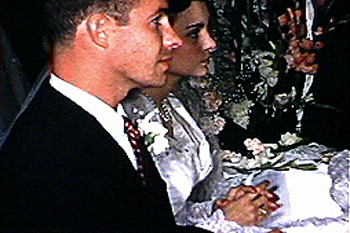Chose Process
The first table gives you an idea of what the same film looks like on each process for your super 8 to dvd. In addition, it describes the advantages and disadvantages as it relates to the other processes in super 8 film to dvd.
The second table goes through a simple discussion on the resolution of 8mm and Super 8 film. To the surprise of many, you must scan above the resolution of the film in order to get a digital copy that is as good as the original film for your conversion from super 8 to dvd.
Our preservation board recommends that you scan at or above the resolution of the film. For 8mm and Super 8 that means scanning at HD or 2K.
If you are looking for the best quality DVD, scan your 8mm or Super 8 at HD. If you are looking to go to BluRay then scan your 8mm or Super 8 at 2K.
8mm And Super 8 Film |

|
SD Scan
- This SD scan was performed with a SD frame by frame machine. The film is ran through a projector and captured using a camcorder.
- A 480 line SD frame by frame process will get about 30-40% of the available details on the film. You can see how blurry the SD scan is compared to the Pro HD or Pro 2K scan below.
- In addition, you can see the blue color shift. This is very common on both 8mm and Super 8 film.
- Lastly, you can see the scratch defects on the film.
|

|
Pro HD Scan
|

|
Pro 2K Scan
|

|
Pro 4K Scan
- This Pro 4K Scan (3112 lines) was performed with a professional 4K Datacine machine.
- This example also includes our optional color correction restoration.
- Most 8mm and Super 8 film will not benefit from a 4K scan. But you can go out to a 4K format like 4K-ProRes. This would allow you to create formats for your 4K/UHD TV.
|
Film Resolution |

|
Resolution of Film
- Determining resolution of film can be a very complicated task involving many variables.
- The image to the left is a 2K scan (1556 lines from top to bottom) of 8mm film
- At full frame it looks nice and clear and you don't see any film grain or digital pixilation.
|

|
Film Grain
- As you zoom in you can start to see the film grain which gives the objects their definition (looks like little dots or bumps).
- We've highlighted the smallest feature which is on the tip of the nose. This is about the size of the film grain.
- Film grain is laid out in a random pattern.
- Film grain is not laid out in a nice, neat pattern like digital pixels in a digital image.
|

|
Film Grain vs Digital Pixel
- Here we are zoomed in enough on the 2K scanned image that you can see the digital pixels.
- The red highlighted area is the smallest feature size which is about 1 grain of film.
- In order to achieve a digital image as good as the film you would need to scan the film at 1/2 the size of the film grain or smaller. Here, the 2K scan is just enough to meet this requirement.
|







